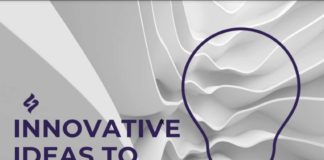In the fast-evolving landscape of global business, CEO in India find themselves at the forefront of strategic decision-making. The optimism about growth prospects is palpable, but the challenges of socioeconomic shifts and rapid technological advancements demand a nuanced approach to talent management. In this article, we delve into three critical aspects that demand the immediate attention of CEOs: Flexible Working, Inclusion, Diversity, and Equity (IDE), and Preparedness for Digital Transformation and ESG Compliance.
I. Flexible Working: Striking the Right Balance
The discourse around the future of work has intensified, with CEOs grappling with the decision of reverting to pre-COVID in-office models or embracing the hybrid working paradigm. The opinions are divided, reflecting a delicate balance between productivity gains and potential communication breakdowns. The statistics reveal that while a significant portion of CEOs in India anticipates a return to traditional office models, a considerable majority considers incentivizing office attendance.
A. Employee-Centric Approaches: The Need for Empathy
To successfully navigate the flexible working landscape, CEOs must prioritize employee preferences. A one-size-fits-all approach may prove counterproductive, especially considering the affinity of millennials towards hybrid working. Genuine engagement with employees, empathy towards their choices, and a balanced model that aligns with both organizational and human aspects are essential. The future of work hinges on a symbiotic relationship between businesses and their workforce.
II. Inclusion, Diversity, and Equity (IDE): A Leadership Imperative
The commitment to fostering IDE in workplaces requires a transformative approach, starting from leadership levels. CEOs, both in India and globally, acknowledge the slow progress in this realm. Achieving gender equity is seen as a catalyst for meeting business growth ambitions. CEOs are urged to take decisive actions, leading and driving a comprehensive IDE agenda. Tangible goals, allocated resources, and transparent, accountable leadership are pivotal for creating inclusive workplaces that align with business objectives.
A. Senior Leadership’s Role: Catalysts for Change
The momentum for IDE must originate from the top echelons of leadership. CEOs are tasked with prioritizing IDE initiatives, setting measurable goals, and appointing dedicated managers to steer these programs. Transparency and accountability in implementing IDE measures are imperative to drive meaningful change within organizations.
III. Preparedness for Digital Transformation and ESG Compliance: A Dual Focus
CEOs worldwide are amplifying their focus on digital transformation, with a notable percentage earmarking it as a top operational priority. The intersection of technology and ethical considerations, especially in ESG (Environmental, Social, and Governance) compliance, demands strategic planning.
A. Technological Reinforcement and Ethical Standards
The embrace of digital transformation should align with ethical standards and IDE principles. Organizations are encouraged to leverage technology to embed ethical considerations in strategic, operational, and HR processes. The integration of Artificial Intelligence (AI) requires a delicate balance – it can enhance productivity but demands employee trust. Therefore, building trust in AI through comprehensive training programs is pivotal for successful implementation.
B. ESG Compliance: A Holistic Approach to Attracting Talent
ESG goals are emerging as a powerful magnet for talent, customer loyalty, and capital. The multifaceted nature of ESG, covering environmental, social, and governance aspects, presents a complex hiring landscape. CEOs must recognize the talent gap in sustainability-focused roles and invest in comprehensive training programs to bridge awareness gaps.
IV. The Human-Centric Business: Nurturing Talent in a Transformative Age
In the midst of strategic imperatives and technological advancements, it is crucial to anchor the discussion in the fundamental understanding that businesses are fundamentally about people. As CEOs strive to attract and retain talent, genuine empathy for the needs of their workforce and a forward-looking perspective are non-negotiable.
A. People-Centric Talent Management
- Fundamental Construction: At its core, a human-centric business recognizes that its foundation is laid by the collective efforts, skills, and aspirations of individuals within the organization. The acknowledgment that people are the driving force behind innovation, productivity, and success is integral to this approach.
- Employee Needs and Aspirations: Understanding and empathizing with the needs, preferences, and aspirations of employees become central tenets of people-centric talent management. This goes beyond traditional HR practices and involves actively engaging with the workforce to comprehend their expectations from the work environment.
- Strategic Alignment: Human-centric talent management aligns organizational strategies with the expectations and preferences of the workforce. This alignment ensures that the business’s objectives resonate with the motivations of employees, fostering a sense of shared purpose and commitment.
B. Thriving in a Dynamic Landscape:
- Adaptability and Flexibility: The transformative age brings about rapid changes in technology, market dynamics, and societal expectations. A human-centric business is characterized by its ability to adapt and be flexible in response to these changes. This adaptability extends to talent management practices, accommodating evolving work models and preferences.
- Employee Empowerment: Empowering employees by providing them with opportunities for skill development, growth, and a supportive work environment is a cornerstone of a human-centric approach. This empowerment contributes to a culture of innovation, resilience, and loyalty within the organization.
C. Fostering a Positive Work Culture:
- Emphasis on Well-being: Recognizing the holistic well-being of employees, including physical, mental, and emotional aspects, is a key feature of a human-centric business. Prioritizing employee well-being contributes to higher job satisfaction, reduced turnover, and increased overall productivity.
- Open Communication Channels: A people-centric approach thrives on open and transparent communication. Establishing clear channels for communication between leadership and employees fosters a culture of trust, collaboration, and shared responsibility.
D. Talent Resilience as the Linchpin:
- Strategic Investment in Talent: Organizations embracing a human-centric model strategically invest in their talent. This investment goes beyond compensation and includes continuous learning programs, mentorship initiatives, and avenues for professional and personal development.
- Attraction and Retention: The human-centric focus becomes a competitive advantage in attracting top talent and retaining experienced professionals. Employees are drawn to organizations that prioritize their well-being, growth, and provide a supportive work environment.
V. Conclusion: A Roadmap for Talent Resilience
In conclusion, CEOs in India face a triad of challenges – navigating flexible working models, championing IDE, and steering digital transformation with ESG compliance. The success lies in a balanced, employee-centric approach that acknowledges the nuances of a rapidly evolving work landscape. As CEOs chart the course for their organizations, aligning business strategies with the aspirations and preferences of their workforce is paramount. In the era of transformative business dynamics, talent resilience becomes the linchpin for sustained growth and success.









